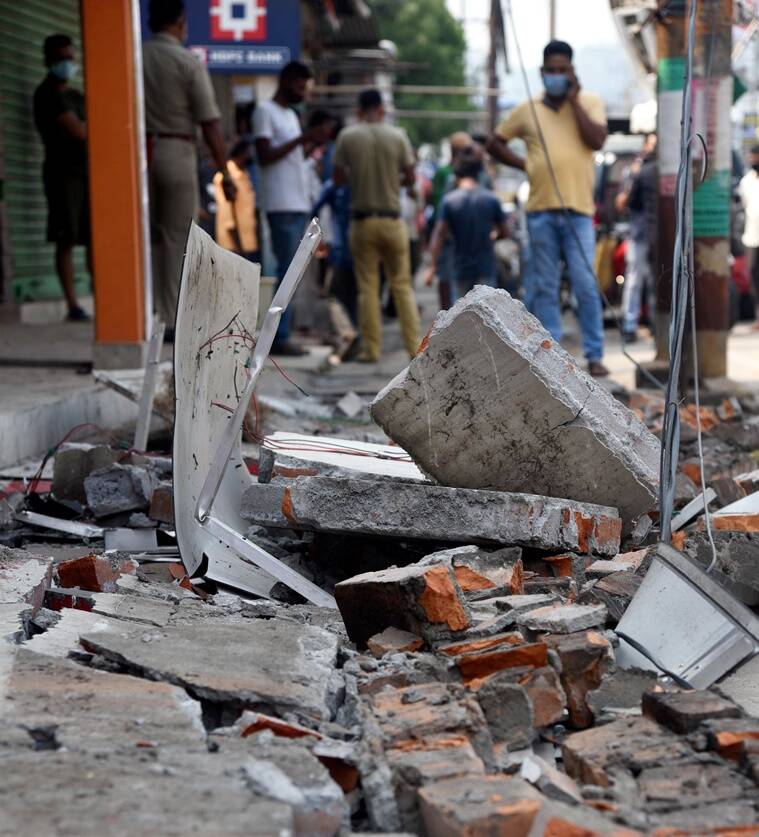India is definitely treading through a dangerous and difficult path now, more than ever, when everyone hoped 2021 to be a better year for us. May be our vulnerabilities make us fragile and our present difficult to endure.
If just the Pandemic wasn’t enough, Assam is undergoing a series of Earthquakes. Recent one, the fourth in a month, though not severe in magnitude, has stirred the minds of Geologists and Scientists.
National Centre for Seismology (NCS) has measured it 2.8 on the Richter scale hitting the Morigaon region in the state.
On May 5, a 3.5 earthquake had hit Assam’s Sonitpur and some other parts. On May 3, there was a tremor measuring 3.7 in Tezpur, which also endured another one on May measuring 3.3 on Richter scale. The first in the series but last month on April 28 was of 6.4 magnitude.
Damages were reported from this one and six aftershocks, of magnitude ranging from 3.2 to 4.7, occurred within two-and-a-half hours following the main tremor.
Why these frequent quakes in Assam?
Geological Survey of India (GSI) explains that an unfamiliar lineament (a linear feature affected by an underlying geological structure such as a fault) has been found as a factor behind frequent earthquakes in Northern Assam’s Sonitpur area.
GSI’s Deputy Director-General Sandip Kumar Som explains: “Sonitpur was the epicentre of this huge 6.4 earthquake after 33 years because of the tectonic complexity. The Atherkhet and Kopili faults, the north-south lineament and the oblique convergence of the Indian plate is causing repetitive earthquakes”.

The Sonitpur district lies within a tectonically complex triangular area encapsulated by the east-west trending Atherkhet Fault, the northwest-southeast trending Kopili Fault(closer to Himalayan Frontal Thrust HFT) and a north-south trending lineament.
Kopili fault extends from the western part of Manipur up to the tri-junction of Bhutan, Arunachal Pradesh and Assam and is filled with the alluvium from the river. It has alone witnessed 1869 earthquake (7.8 magnitude) and the 1943 earthquake (7.3 magnitude).
What is a fault in simpler terms?
It is a fracture along which the blocks of Earth crust on either side have moved relative to one another parallel to the fracture and along this, stresses may develop.
According to the USGS, “When an earthquake occurs on one of these faults, the rock on one side of the fault slips with respect to the other. The fault surface can be vertical, horizontal, or at some angle to the surface of the earth.”

Earthquakes are a result of release of accumulated stresses within Earth for fairly long time.
There are other active faults too those hit the Sonitpur area: The Siang Fracture, Yemla Fault, Namula Thrust and Canyon Thrust are spread across the northeast and are active along with Main Himalayan Thrust, Main Boundary Thrust, Main Central Thrust and several subsidiary faults.
It seems to be the headquarter hosting the grand network of faults spread in the area.
Vulnerability in The North East:
The northeast falls within the Seismic Zone V indicating high vulnerability and danger pertaining to hyperactive sensitivity to the seismic activity.
Since it broke from Gondwanaland, Indian plate has been moving upwards and more into the Eurasian plate for ultimate subduction i.e. crushing of one tectonic plate under the other.
It is moving northeast towards the Himalayan region, their oblique collision and release of stress and strain accumulated in the local tectonic or fault environments lead to earthquakes.
History of Quakes in the region:
Out of many recorded and even unnoticed ones, one attracts our attention anyday: The great Assam-Tibet Earthquake that occurred on Independence Day in 1950. It is one of the strongest (had a moment magnitude of 8.6) on the entire planet, caused landslides and blocked a few rivers.
Another notable one was Assam earthquake of 12 June 1897 that reduced all masonry buildings to rubble. Earlier the development and adoption of Assam-type houses by the Chinese carpenters had shown excellent performance but now they are rarely constructed (lesser use of Timber for any other use promoted now).
Amongst the various reasons for susceptibility to Earthquakes in the region, we cannot change the geomorphology of the area but can surely adapt to its needs. Possible mitigation can also prevent further loss to lives and livelihoods.


